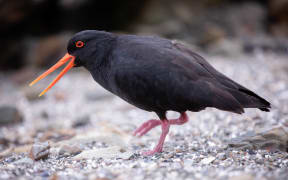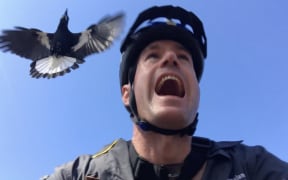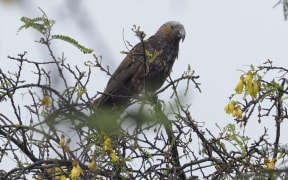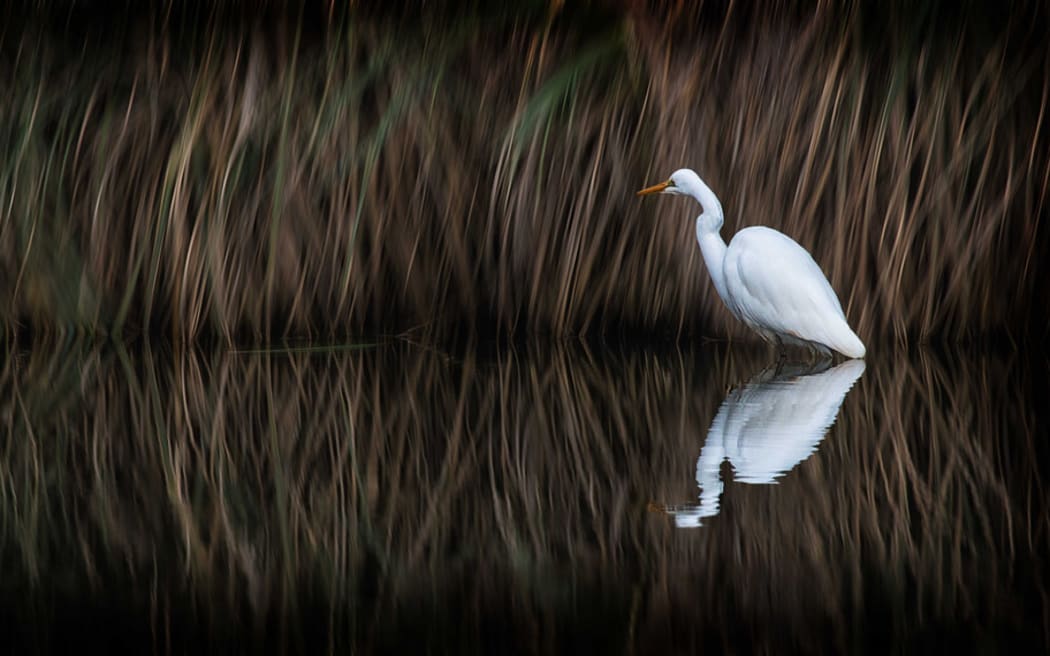
The white heron / kōtuku which is a nationally critically threatened species (the most severely threatened a species can be) was among the birds killed. Photo: Flickr
Nearly 60 native birds, some critically threatened, have been shot and killed across the country over the past three years.
New data revealed to RNZ via the Official Information Act shows 58 native birds have been shot by people between late 2020 to 2023.
The Department of Conservation could not provide the full data from 2020 due to the introduction of a new database for storing the reports.
It told RNZ that of the animals shot, only one bird survived the injuries.
Only three infringement notices worth $800 each have been dished out to offenders as a result of the incidents.
The birds killed include nationally critically threatened species (the most severely threatened a species can be) - the Australasian Bittern / matuku-hūrepo and the white heron / kōtuku.
The species shot the most were the nationally endangered kea, the red-billed gull / tarāpunga and tūi.
DOC mostly relies on members of the public finding and reporting dead or injured birds.
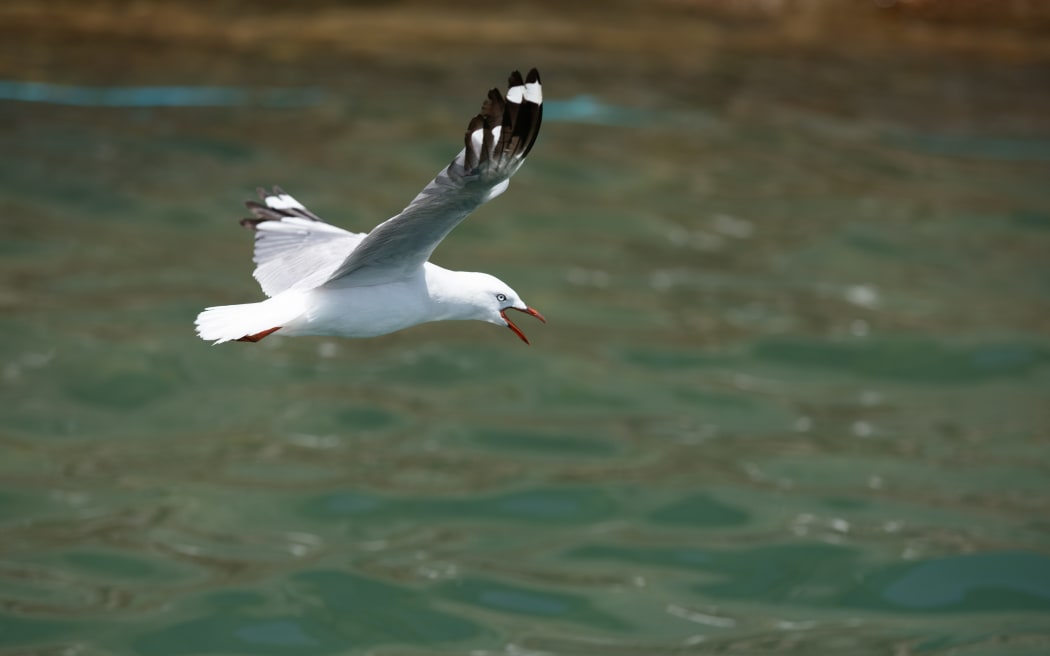
The red-billed gull / tarāpunga. Photo: RNZ / Simon Rogers
DOC principal investigation officer Hayden Loper said it did not know the reason why many of the birds were killed.
"It's a safe assumption that some of them are mistaken identity but then some of them are obviously shot maliciously, which is unfortunate and quite concerning for DOC."
Loper said the number of birds shot compared to the number of people that have faced penalties was disappointing.
"We pride ourselves with holding people accountable for their actions and it is just unfortunate these incidents are quite difficult for us to pin down the offenders on."
He indicated that the true number of native birds shot was likely worse.
"I'd be surprised if these numbers tell the full story. I think there's probably more to it than that. I think there's probably some incidents out there that aren't getting reported."
Kea Conservation Trust conflicts resolution coordinator Andrea Goodman said it was aware of people having a low tolerance to kea when they damaged property.
"Kea do tend to move on but often they don't get a chance to and people can try get rid of the birds."
Goodman said it was important to find ways for people and nature to live in the same environment.
"It's accepting that we have to share our place with the native wildlife and try to make it that we can both live together."
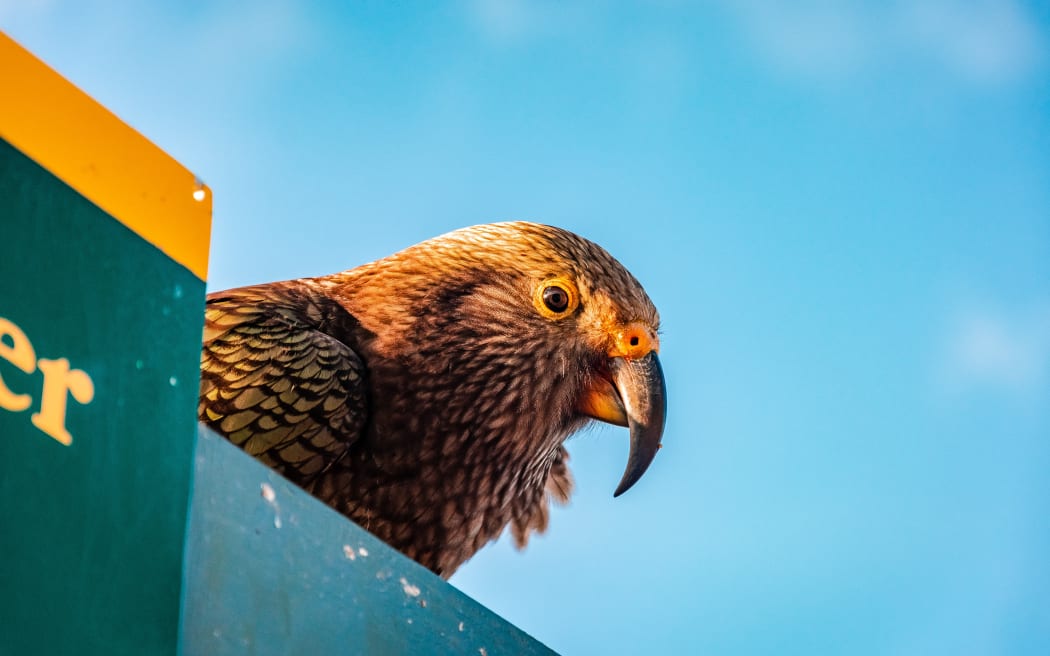
Kea Conservation Trust says some people have a low tolerance to kea when they damage property. Photo: Sébastien Goldberg/Unsplash
Save the Kiwi chief executive Michelle Impey said the list of birds was concerning.
"I have heard of kea being shot unfortunately and it seems the red-billed gull were quite high in numbers on that list so that is certainly not awesome to see for sure."
Only one North Island brown kiwi contributed to the total number of birds shot.
Impey said the amount of kiwi being shot was a drop in the bucket compared to those killed by threats such as dogs.
She referenced an incident earlier this year when six kiwi were found dead in the Bay of Islands.
"A number of kiwi were killed in Ōpua Forest in the Bay of Islands and we know that because a lot of the dead kiwi were found by tracks."
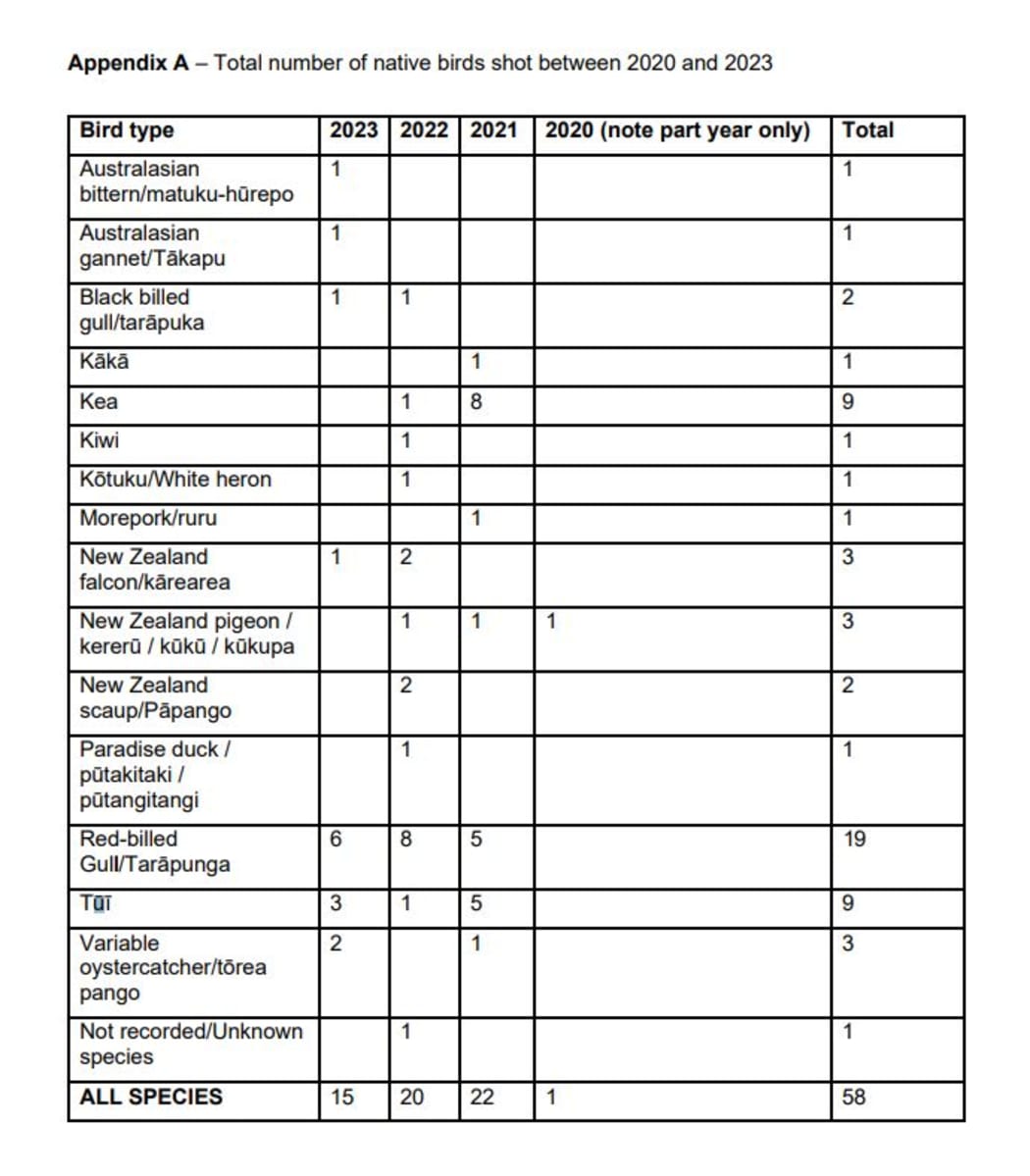
Photo: Supplied / Department of Conservation

